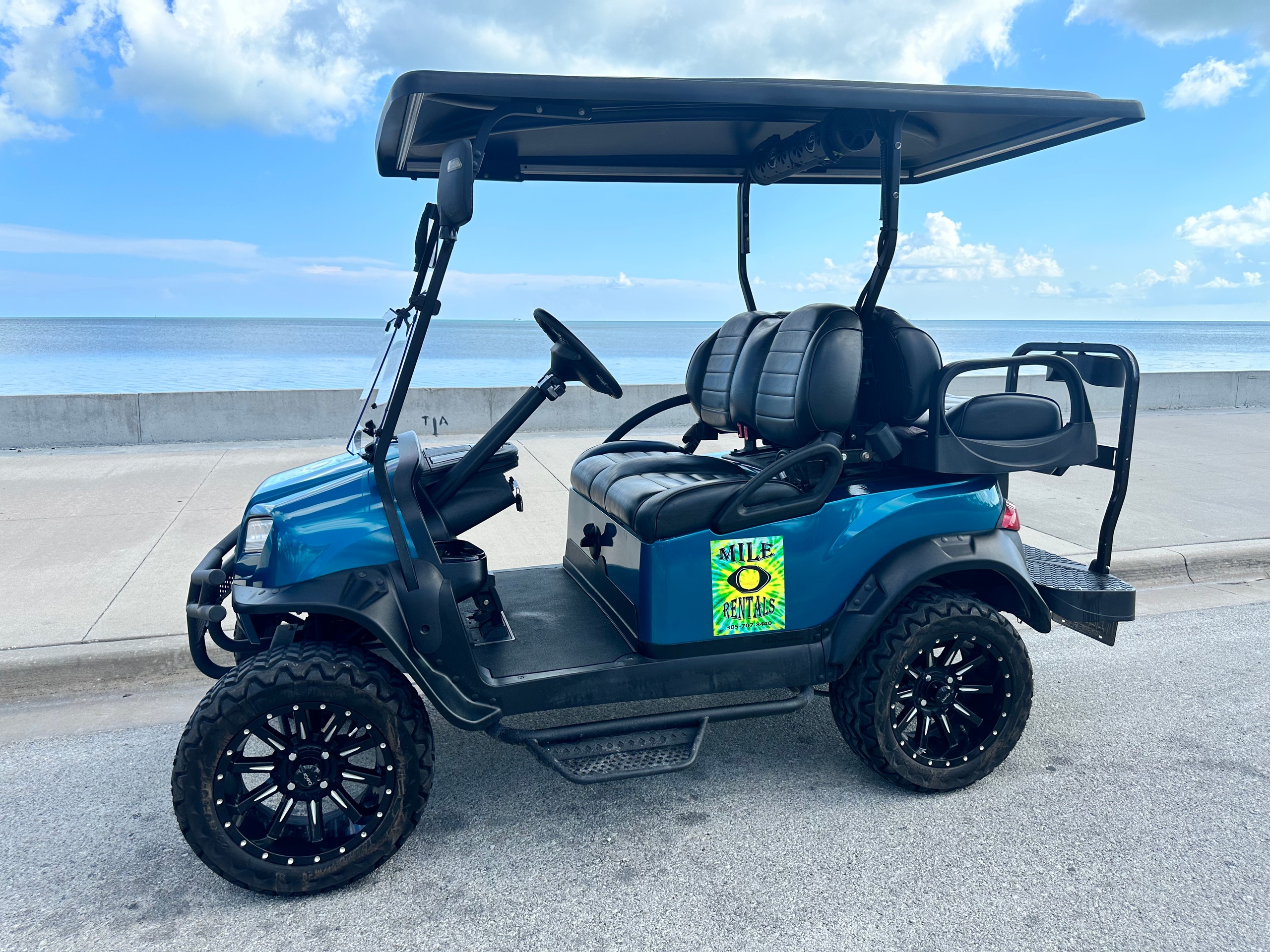Sedona’s dramatic red-rock trails test your endurance, but optimizing your hiking cart’s seat and cooler makes every step more manageable. Learn practical tips for balancing comfort, hydration, and gear security to fully engage with this vibrant desert terrain.
Choose a Breathable, Adjustable Seat
Select a seat with moisture-wicking fabric and adjustable tilt to prevent fatigue on uneven Sedona trails.
Secure Your Cooler Low on the Cart
Mount your cooler near the base of the seat to maintain balance and prevent tipping on rocky paths.
Pack Lightweight Essentials Only
Limit your load to essentials to avoid overburdening the cart on steep elevation gains.
Hydrate Early and Often
Use your cooler to keep water bottles chilled and accessible during Sedona’s dry, sunny conditions.
Preparing Your Cart for Comfort: Seat and Cooler Optimization in Sedona, Arizona

Premium 4 Passenger Gas Cart Rental
Holds 4 People
Discover the vibrant sights and scenic routes of Key West with a private gas cart rental. Perfect for groups, this activity offers a flexible way to explore the island at your own pace while soaking in breathtaking coastal views.
Exploring Sedona’s rugged terrain on a hiking cart can amplify your adventure, especially when your seat and cooler are optimized for comfort and functionality. Sedona's landscape pushes back with rocky, uneven paths and steady elevation changes, demanding gear as resilient as the environment itself. Here’s how to prepare your cart to match this fiercely beautiful setting.
Start with the seat. Sedona trails can throw everything from sudden climbs to long stretches of dusty washouts at you. Choosing a seat with ample padding and adjustable height lets your body rest where it needs most. Look for materials that wick moisture—heat here isn’t shy—and don’t settle for a static setup; tilt and swivel features give you freedom to ease tension in your back and hips as you navigate tighter switchbacks.
Next, focus on the cooler. Hydration is king in the arid air, but your food also needs protection from heat and jostling. A cooler with thick insulation and divided compartments lets you stash cold water bottles separate from snacks and fresh produce, keeping each item in ideal condition. Secure it firmly to avoid sliding impacts that could bruise fruits or spill liquids into your gear.
Consider placement. Position the cooler low and near the base of the seat for balance—the rocky trails here punish anything top-heavy. A stable, well-balanced cart prevents fatigue by letting your arms steer with precision instead of compensating for wobble. Don't forget quick access: a side pouch or easy-open lid means you can grab refreshments without stopping momentum.
Optimize your load. Keep weight manageable, aiming for essentials only. Sedona’s trails, from Bell Rock to Devil’s Bridge, span 3 to 4 miles with elevation gains around 400 to 800 feet depending on your route. Your cart must support this intensive yet rewarding challenge without pulling you down.
Weather and timing matter. Early morning or late afternoon hikes avoid high sun exposure, letting the coolers work less and your seat’s breathable fabric do more. Pack light layers that can stow in the cooler's side pockets to adapt quickly to temperature shifts.
By respecting Sedona’s rugged personality and preparing your cart with thoughtful seat and cooler choices, you create a partnership with the environment rather than a battle. The path is demanding but generous—for those equipped to meet it halfway, rewards come in sweeping red-rock vistas, fragrant juniper breezes, and moments where nature’s fierce self leans in close.
Nearby Trips
All Adventures
Boat Charters
Water Activities
Adventures near Sedona
Discover the unique and memorable adventures that make Sedona special.
Frequently Asked Questions
What is the best way to keep my cooler contents cold during summer hikes in Sedona?
Use an insulated cooler with thick walls and add reusable ice packs rather than regular ice to prevent water mess. Place the cooler in the shade on your cart and keep it closed as much as possible to maintain low temperatures.
Are there any hidden spots near Sedona where a cart is particularly helpful?
Red Rock Crossing and West Fork Trail have sections with less maintained paths, where a well-balanced cart makes carrying extra supplies easier, especially on steep or muddy stretches.
How should I secure my cart belongings against sudden shifts along rocky Sedona trails?
Use durable bungee cords and compartments with zippers to tightly fasten your gear and cooler. Check attachments before steep descents where the cart is more prone to tipping.
What kind of wildlife might I encounter while hiking in Sedona?
Expect to see mule deer cautiously stepping through brush, vibrant Gambel’s quail bobbing beside trails, and occasionally a red-tailed hawk circling above, all part of Sedona’s dynamic ecosystem.
Is it better to hike early morning or late afternoon in Sedona with a cart?
Early morning is ideal; trails awake cool, shadows linger, and fewer hikers crowd the path, giving your cart ample opportunity to handle uneven sections with less interference.
Are there historical or cultural considerations regarding cart use on Sedona trails?
Many trails cross lands sacred to Indigenous peoples; stay on designated paths and minimize impact. Using a cart helps reduce strain on your body and trail damage, supporting a responsible hiking ethic.
Recommended Gear
Padded Adjustable Seat Cover
Reduces pressure and manages sweat on long, hot hikes.
Insulated Soft-Sided Cooler
Keeps water cold and food protected from heat and shaking.
Sturdy Off-Road Cart Wheels
Enables smoother navigation over rocky and uneven Sedona trails.
Sun Protection Hat and Layered Clothing
Prevents sunburn and lets you adapt to shifting daytime temperatures.
Local Insights
Hidden Gems
- "Doe Mountain’s quieter summit offers expansive views with less foot traffic."
- "The Fay Canyon arch, a subtle natural formation off the main loop trail."
Wildlife
- "Watch for the elusive ringtail fox at dusk."
- "Sonoran desert toads often surface after spring rains."
History
"Sedona’s trails wind through lands historically inhabited by the Sinagua people, whose rock art and ancient dwellings remain close to main paths."
